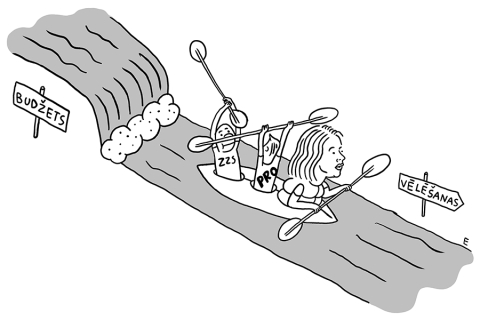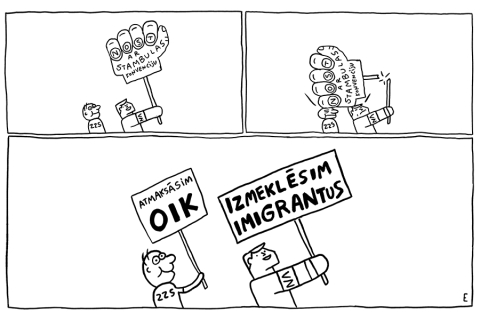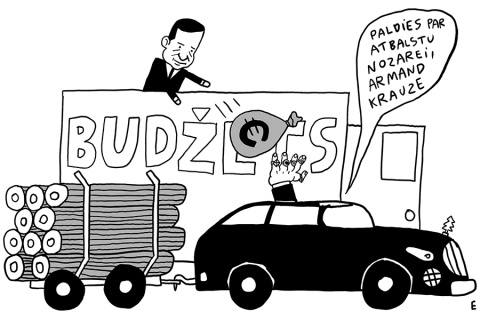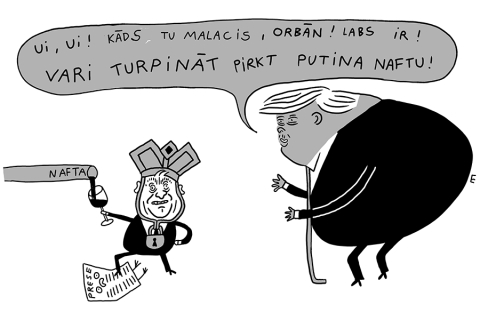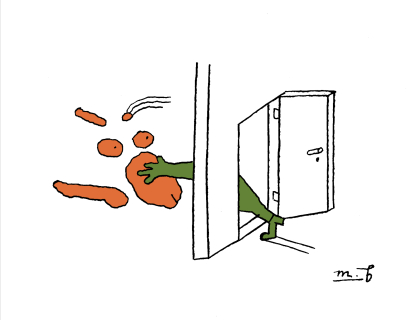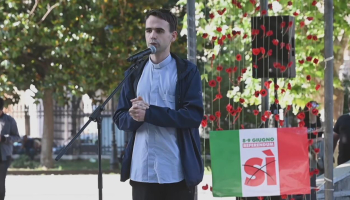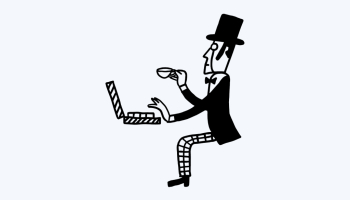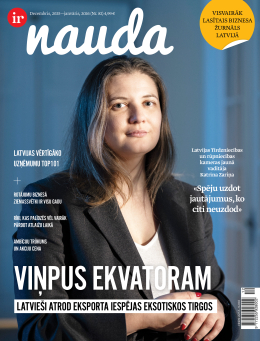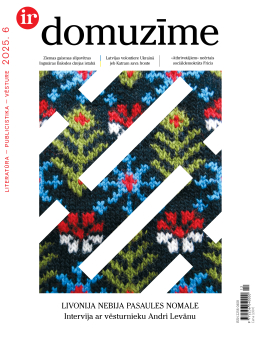Žurnāls Ir | Svarīgākais politikā, ekonomikā un kultūrā
Jaunākie raksti


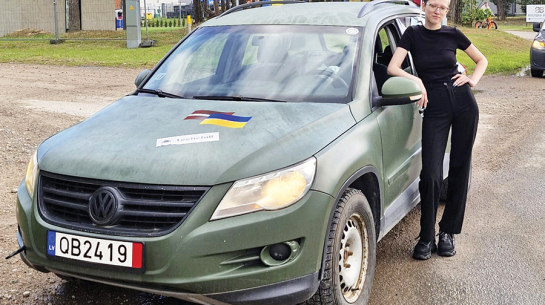
Cilvēki, kas joprojām nenogurstoši palīdz Ukrainai
Jau gandrīz četrus gadus ilgstošais karš Ukrainā ir nogurdinājis arī daudzus palīdzētgribētājus, taču šie cilvēki aktīvi turpina sniegt atbalstu ukraiņiem

ASV sagūsta Maduro
Baltijas jūrā pie Liepājas bojāts optiskais kabelis
Rēzeknē atlaiž Gora vadītāju
Lasīt vairāk →Īsi par svarīgāko ik rītu — pieraksties jaunumu vēstulei Ir Svarīgākais!
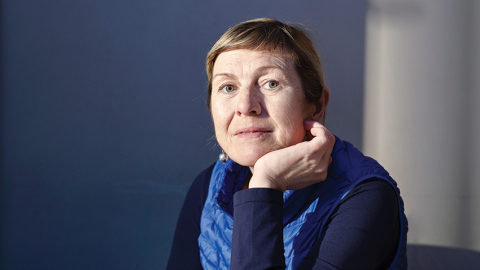
«Gribēja aprakt, bet nezināja, ka esam sēklas…»
Rakstniece Nora Ikstena pēc smagiem notikumiem savā dzīvē saka — liktenis viņai bija izvēlējies pamatīgu, īstu un dziļu restartu. Nu dāvāta vēl viena iespēja atgriezties, būt, radīt. Rakstīt. Šobrīd jau pusē Noras jaunā grāmata
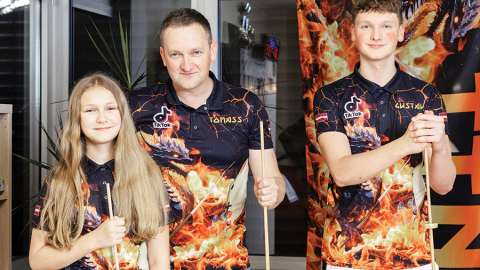
Latviešu lepnums — novuss — iekaro TikTok
Latvijas nemateriālās kultūras mantojuma sarakstu šogad papildinājis novuss, ko droši var saukt par mūsu nacionālo sporta veidu. Lai nestu tā vārdu arī tālāk pasaulē, Rēderu ģimene ķērusies pie mūsdienīga paņēmiena — tiešraidēm platformā TikTok

Baltijas ekonomika uz pārmaiņu sliekšņa: ko 2026. gads nesīs Latvijai?
Latvijas ekonomikas izaugsme ir lēna, joprojām atpaliekot no Lietuvas, turklāt ārējie riski pieaug – Vācijas un Polijas bremzēšanās, parādu kāpums eirozonā un iespējamā ASV recesija rada spiedienu 2026. gadā pārskatīt Latvijas eksporta prioritātes, nodokļu politiku un investīciju virzienus.
Raidieraksti
Karikatūra
Gada cilvēki 2025
Bizness un ekonomika

Zaļenieku kokaudzētavas biznesa veiksmes stāsts
Latgales puika Imants Parfenovičs sapņoja par mūziķa karjeru, taču dzīve aiznesa uz otru Latvijas malu un pavisam citu profesiju. Pirms 30 gadiem veidoto uzņēmumu dārznieks vada vēl 73 gadu vecumā

Gudrāki logi – uzņēmuma i2 biznesa veiksmes stāsts
Krista Slokenberga ģimenes uzņēmums i2 ražo logus, vienus no energoefektīvākajiem, kādi pieejami tirgū un kurus novērtē arī dizaina dēļ. Pirms to iemācījās, viņš divreiz bankrotēja
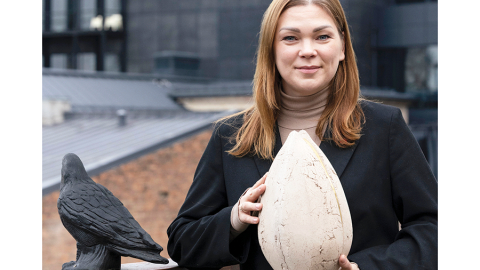
Nāve nav beigas
Kapu kopšanas tradīciju latvieši pārmanto no paaudzes paaudzē, tomēr tradicionālā apbedīšana ir smaga gan dabai, gan tuviniekiem. Kad uzņēmuma Turn Urn dibinātāja Līva Elksne īsā laikā piedzīvoja divu tuvinieku aiziešanu, viņa nolēma to mainīt
Viedokļi
Personības
Eiropā
Recenzijas
Populārākie raksti

Trampa jaunā pasaule
ASV valdība ir paziņojusi mērķi pārdalīt globālās ietekmes sfēras

Salacgrīvā suņi uzbrūk medmāsai – Ilzei vairākas operācijas, dzīvnieki joprojām savā vaļā
Divi suņi novembrī Salacgrīvā stipri sakoda medmāsu Ilzi, kura bija ieradusies pie pacientes. Viņai veiktas četras smagas operācijas, tikmēr suņi joprojām staigā brīvā vaļā, ierobežoti tikai ar elektrosētu

Nošāva draugu un tad sevi. Kas atklāts zēnu nāves lietā Pļavniekos?
Februārī kādā dzīvoklī Pļavniekos atrada divus mirušus zēnus ar šautām brūcēm galvā. Izmeklēšanā šī traģēdija atzīta par rotaļas laikā notikušu nejaušību. Upura ģimene pirmo reizi atklāti runā un apšauba izmeklēšanas rezultātus

Pusmiljons eiro drošības naudai! Atbrīvo pusmiljarda atmazgāšanā apsūdzēto Elmāru Laizānu
Pusmiljarda eiro atmazgāšanas lietā apsūdzētais uzņēmējs Elmārs Laizāns atbrīvots no apcietinājuma. Drošības naudas apmērs — pusmiljons eiro

Ārpus rāmjiem. Kā tapa godalgotais koka bērnudārzs Salaspilī?
Koka bērnudārzs Salaspilī tapa par spīti noteikumiem, kas neļāva tādu būvēt. Šogad tas saņēma Latvijas Arhitektūras gada balvu

Minimālās algas celšana nedrīkst kļūt par “zaļo gaismu” noziedzniekiem
Valstī ik pa laikam tiek celta minimālā alga, un šādu lēmumu pieņem izpildvara – Ministru kabinets. No pirmā acu uzmetiena tā ir sociāli taisnīga un atbalstāma iniciatīva, kas paredzēta iedzīvotāju labklājības uzlabošanai. Tomēr aiz šī ekonomiskā instrumenta slēpjas arī būtiska juridiska dimensija, par kuru sabiedrība reti aizdomājas – minimālās algas celšana automātiski ietekmē vairākus krimināltiesību un administratīvās atbildības kritērijus.

Izspiest sevi līdz pēdējam. Saruna ar pasaulslaveno soprānu Marinu Rebeku
Pirms dažām nedēļām pasaulslavenais soprāns Marina Rebeka (45) saņēma Starptautisko Operas balvu, ko dēvē par operas pasaules Oskaru. «Skaistākais ir tas, ka balvu nepiešķīra žūrija, tā bija publikas izvēle,» saka operdziedātāja


